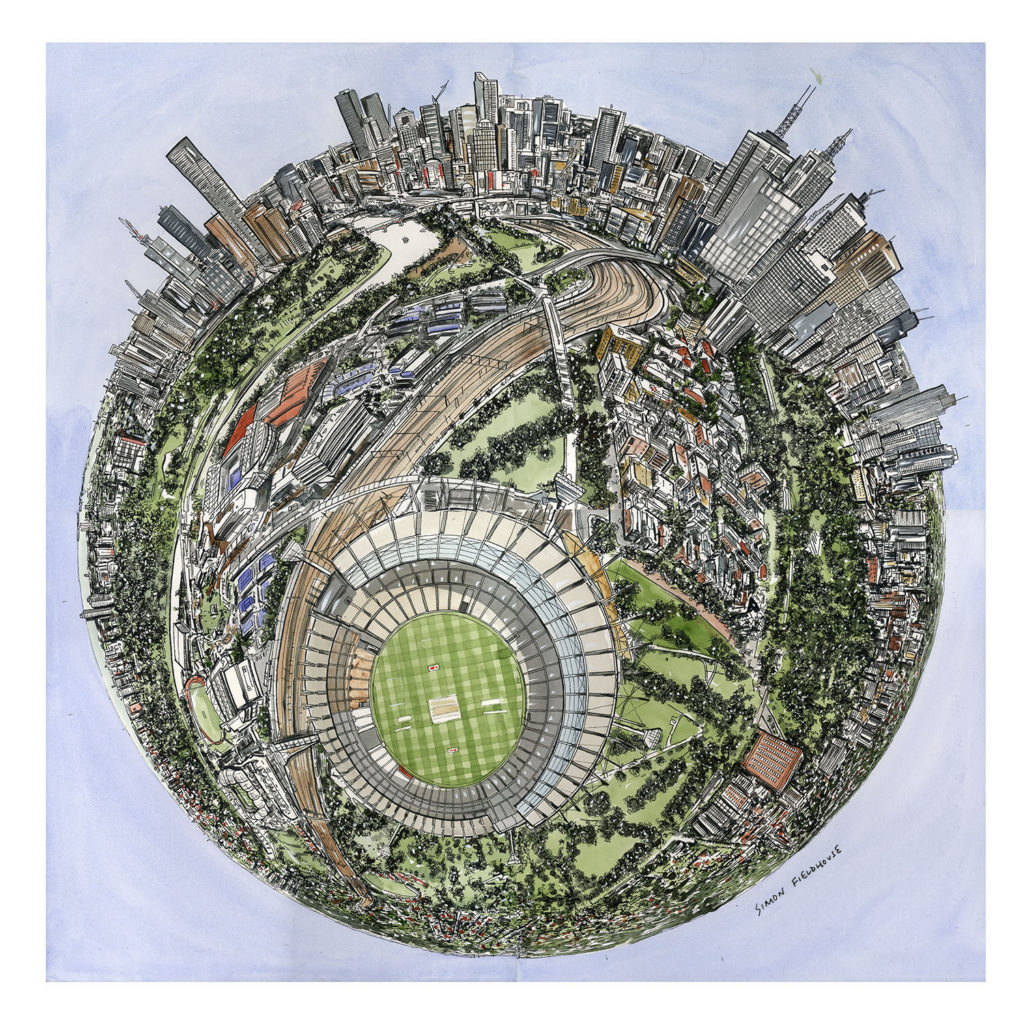
Melbourne Cricket Ground - MCG
The Melbourne Cricket Ground (MCG), affectionately known as the "G," stands as a testament to Australia's rich sporting heritage and passion for cricket and Australian rules football. It is an iconic venue that has witnessed countless historic moments and played a significant role in the nation's sporting and cultural identity.
The MCG's history dates back to 1853 when it was established in Yarra Park, East Melbourne. Over the years, it has undergone numerous renovations and expansions to transform into one of the world's most iconic sporting venues. With a seating capacity of over 100,000, it is the largest stadium in the Southern Hemisphere, making it a perfect host for major events such as the 1956 Summer Olympics and the 2006 Commonwealth Games.
Cricket has been the heart and soul of the MCG since its inception. It has hosted numerous iconic cricketing moments, including the first-ever Test match between Australia and England in 1877. The "G" is also the traditional home of the Boxing Day Test match, a fixture that has become a cultural phenomenon in Australia. The ground's vast, lush green outfield and historic Members Stand provide an idyllic backdrop for these intense battles between bat and ball.
Apart from cricket, the MCG is synonymous with Australian rules football, hosting the Australian Football League (AFL) Grand Final every year since 1902. The electrifying atmosphere created by over 100,000 fans on this day is an experience unlike any other. The roar of the crowd, the iconic halftime entertainment, and the final siren are etched into the memory of every AFL enthusiast.
The MCG's influence extends beyond sport. It is a cultural symbol, featured in movies, music, and literature. Its architecture is a blend of history and modernity, with the Melbourne Cricket Club's imposing Members Stand alongside the contemporary Northern Stand. The venue's National Sports Museum is a treasure trove of Australian sporting history.
The MCG also plays a significant role in the social fabric of Melbourne. It is a place where family and friends gather to create cherished memories. The "G" is not just a sports arena but a meeting point for people of all backgrounds, fostering a sense of community and shared identity.
In recent years, the MCG has adapted to modern demands while preserving its historical significance. State-of-the-art facilities, including high-definition screens and corporate suites, provide a world-class experience for spectators. The ground's commitment to sustainability has seen the installation of solar panels and water-saving initiatives.
The Melbourne Cricket Ground is more than a stadium; it is an embodiment of Australia's love for sport and a testament to the nation's history and culture. It stands as an enduring monument to the passions that unite people, regardless of their backgrounds or beliefs. With its rich legacy, iconic events, and enduring relevance, the MCG will continue to hold a special place in the hearts of Australians and sports enthusiasts worldwide, serving as a symbol of excellence and camaraderie in the world of sports.
- The Members Stand: The iconic Members Stand is a symbol of the MCG's rich history. This heritage-listed structure was completed in 1927 and is characterized by its elegant, Edwardian-style architecture. It features a meticulously designed façade, ornate wrought-iron gates, and a distinctive Members' entrance. The Members Stand is a place where tradition is revered, and the interior exudes a sense of nostalgia, with historic memorabilia and traditional wooden seating. It's a testament to the enduring love of cricket and a historical treasure trove.
- The Great Southern Stand: In contrast to the Members Stand, the Great Southern Stand represents modernity and innovation. Completed in 1992 and revamped in 2005, it's a masterpiece of contemporary design. This stand is known for its imposing steel and glass structure, offering a stark contrast to the historical backdrop. It can accommodate over 48,000 spectators, making it one of the world's largest stands. Inside, modern amenities include corporate suites, restaurants, and hospitality facilities, offering a premium sporting experience.
- The Northern Stand: The Northern Stand, which opened in 2018, is another example of the MCG's commitment to modern architecture and sustainability. The design emphasizes sustainability with features like rooftop solar panels and water recycling systems. The structure is a nod to the future of stadium design, with a focus on environmental responsibility and fan comfort. It also provides an elevated view of the playing field, enhancing the spectator experience.
- Integration of Modern Technology: The MCG has not only modernized its stands but has also integrated cutting-edge technology. High-definition video screens and LED displays have been installed throughout the stadium, ensuring that fans don't miss any of the action, and enhancing their engagement with the events. This combination of technology and design creates a truly immersive experience.
- Iconic Light Towers: The MCG's towering light structures are an integral part of its architectural identity. These light towers were erected in 1985 and have become a defining feature of the stadium's skyline. They enable the MCG to host night matches and are visible from many parts of Melbourne, acting as beacons during significant events.
- Multifunctionality: The MCG's design also allows it to host a wide range of sporting and cultural events. The pitch can be adapted for cricket, Australian rules football, soccer, and rugby, making it one of the most versatile stadiums globally.
In summary, the architecture of the Melbourne Cricket Ground is a testament to its commitment to preserving tradition while embracing innovation and sustainability. The historic Members Stand, the modern Great Southern Stand, and the environmentally conscious Northern Stand all play their part in creating a stadium that is not only iconic but also functional and sustainable, ensuring that the MCG remains a world-class venue for generations to come.